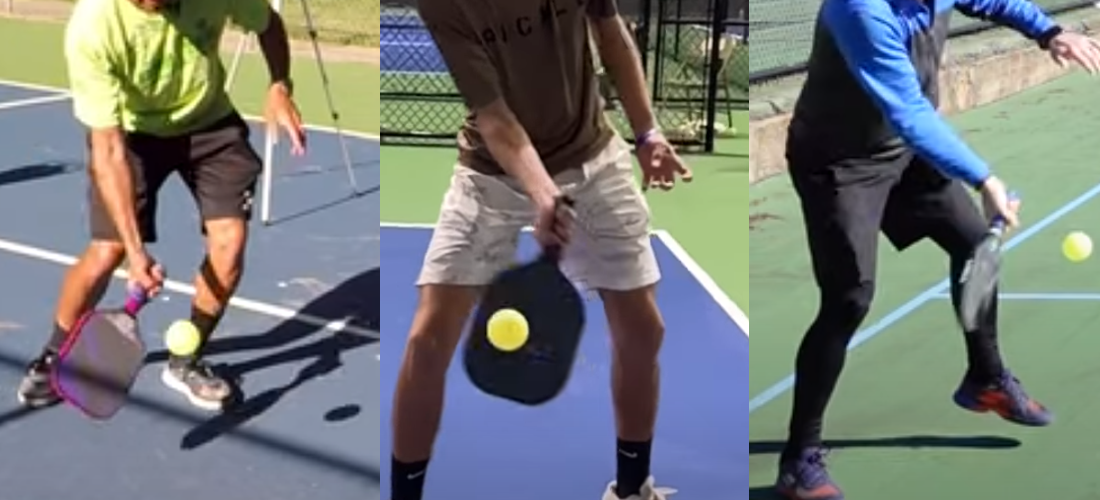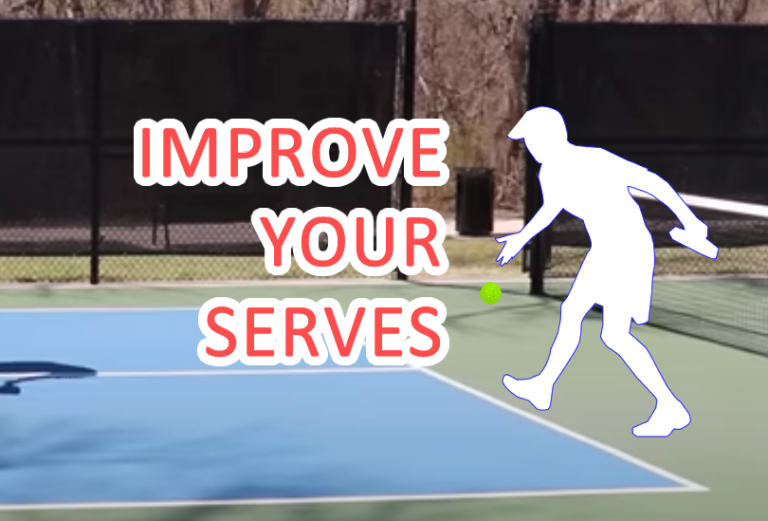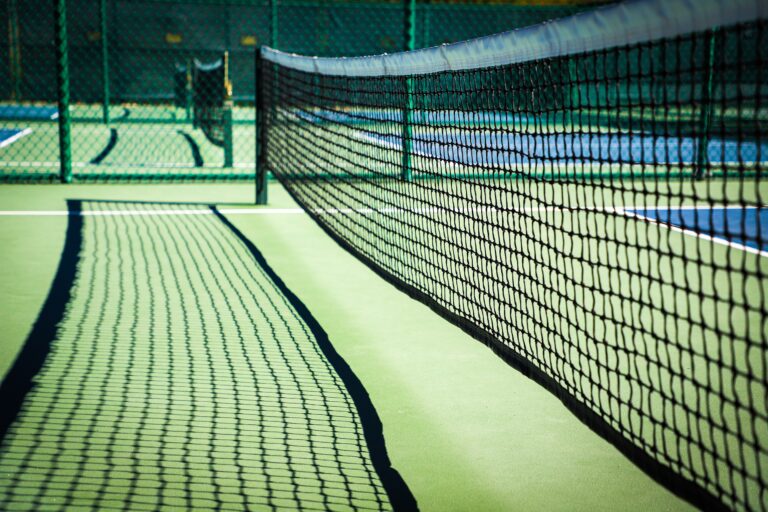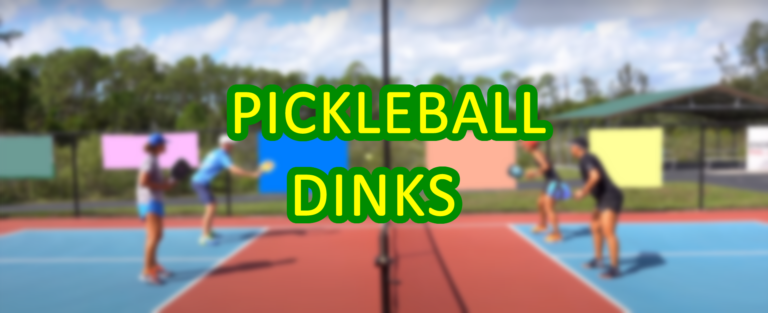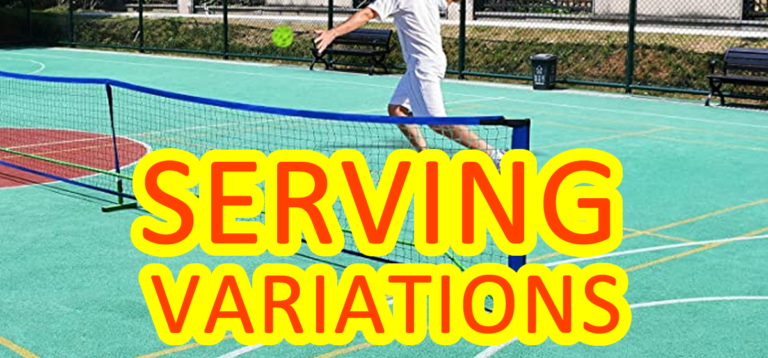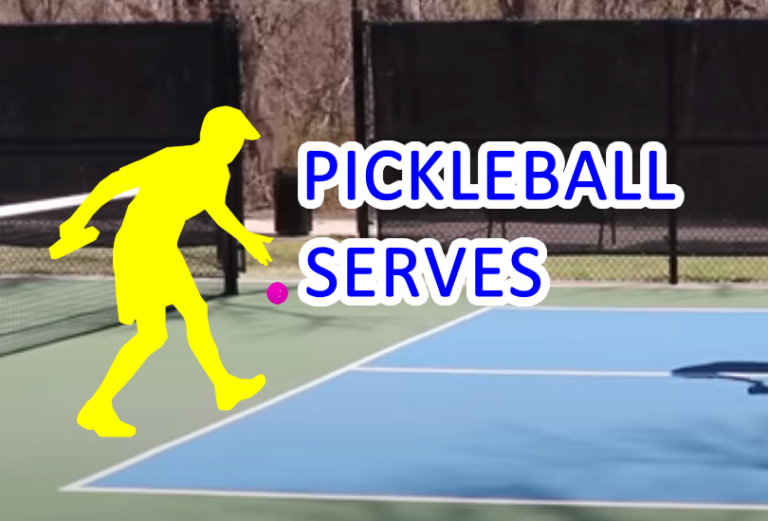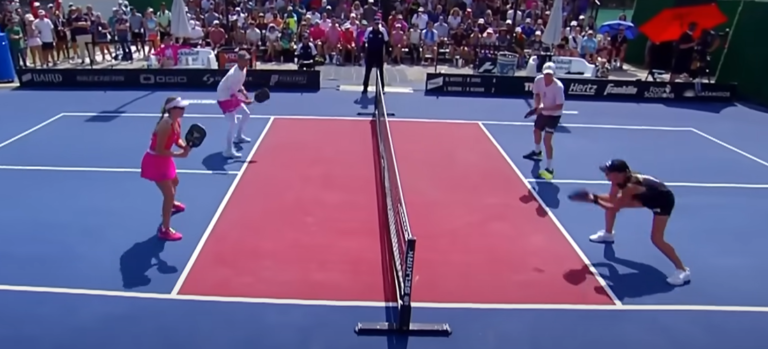Spin Shots: Beginner’s Guide to Adding Spin to Your Game
In pickleball, spin shots are a crucial aspect of your gameplay that can greatly enhance your control and strategic prowess on the court. By imparting spin on the ball, you can manipulate its trajectory, bounce, and speed, giving you a significant edge over your opponents.
When you execute a spin shot, such as topspin or backspin, you’re essentially making the ball spin as it travels through the air. This spin affects how the ball interacts with the paddle, the court surface, and the net, ultimately influencing how it bounces and responds to your opponent’s actions.
Incorporating spin shots into your arsenal also allows you to create a diverse range of shots. You can disguise your intentions, keep your opponents guessing, and maintain an element of surprise. This unpredictability gives you the upper hand, as your opponents will struggle to anticipate the spin and adjust their positioning and strokes accordingly.
Understanding Pickleball Spin Shots
In pickleball, there are two primary types of spin shots: topspin and backspin (also known as underspin). Let’s delve into each type and how they affect the ball’s trajectory and behavior:
Topspin
Topspin is a type of spin where the top of the ball rotates forward, causing the ball to dip and accelerate as it travels through the air. When you hit a topspin shot, you brush upward and forward against the back of the ball with your paddle. This creates a rotational motion that makes the ball spin forward.
Effects:
- Faster Descent: Topspin shots create a steeper trajectory, causing the ball to dip more quickly after crossing the net. This makes it challenging for opponents to judge the ball’s landing point accurately.
- Bounce and Jump: Upon bouncing, a topspin shot tends to bounce forward, making it harder for your opponent to predict where the ball will bounce.
- Offensive Power: Topspin shots can generate additional pace and depth, making them effective for aggressive shots and deep returns.
Backspin (Underspin)
Backspin involves spinning the bottom of the ball backward, resulting in a slower, controlled trajectory. To hit a backspin shot, you brush downward and backward against the bottom of the ball with your paddle.
Effects:
- Slower Bounce: Backspin shots have a lower bounce and tend to stay closer to the net after bouncing. This can force your opponent to approach the net cautiously.
- Shorter Distance: The backspin effect causes the ball to lose pace, which can be useful for drop shots or shots that land just over the net.
- Disruptive Bounce: The ball may have an unpredictable bounce due to the backspin, making it challenging for opponents to anticipate its trajectory.
It’s worth noting that while topspin and backspin are the primary types of spin shots, players often combine these spins with other shot techniques (like slices or dinks) to create even more variations in ball movement. Learning how to execute these spins effectively allows you to introduce a layer of control and strategy to your pickleball game. By mastering the art of spin shots, you’ll be better equipped to dictate the pace, placement, and direction of the ball, putting you in a position of advantage on the court.
Mastering the Techniques of Spin Shots
Here are some techniques to help you master pickleball spin shots using the second person point of view:
Grip and Hand Position
Topspin: To generate topspin, hold your paddle with a semi-western or full-western grip. As you make contact with the ball, brush your paddle upward and forward while slightly closing the paddle face. This action imparts topspin on the ball.
Backspin: For backspin, use a continental grip. As you hit the ball, brush your paddle downward and backward, ensuring the paddle face is slightly open. This motion imparts backspin on the ball.
Contact Point
Topspin: Focus on making contact with the lower half of the ball, slightly below its equator. This will help you create the necessary upward and forward brushing motion to generate topspin.
Backspin: Aim to contact the lower portion of the ball, just beneath the equator. This contact will allow you to create the desired downward and backward brushing action for backspin.
Follow Through
Topspin: After hitting the ball, follow through with your paddle in an upward and forward direction. This motion helps accentuate the topspin effect and ensures the ball dips over the net.
Backspin: For backspin, maintain a controlled follow-through that continues downward and slightly backward. This follow-through aids in generating the desired backspin rotation.
Body Positioning
Topspin: Stand slightly behind the ball and lean forward, allowing you to naturally angle your paddle for topspin. Bend your knees and use your legs to generate power for the shot.
Backspin: Position yourself close to the net and maintain a more upright stance. This positioning enables you to execute the brushing motion for backspin effectively.
Practice Drills
Topspin: Work on topspin shots by hitting against a wall or practicing with a partner. Focus on consistently brushing upward and forward to create the desired topspin effect.
Backspin: Practice backspin shots by aiming to keep the ball low and close to the net. Experiment with the amount of backspin to control the ball’s bounce.
Observation and Adaptation
Topspin: Observe how the ball reacts after hitting the court. Pay attention to the bounce and trajectory to refine your topspin technique for different scenarios.
Backspin: Watch how the ball bounces off the paddle and court after hitting a backspin shot. Adjust your technique to achieve the desired bounce and control.
Mental Focus and Experimentation
Topspin: Visualize the ball’s trajectory and focus on the upward and forward brushing motion. Experiment with different degrees of spin to find the right balance.
Backspin: Concentrate on the downward and backward brushing motion for backspin shots. Explore variations in paddle angle to control the amount of backspin.
By practicing these techniques and gradually honing your ability to execute topspin and backspin shots, you’ll add a valuable dimension to your pickleball game. Mastery of spin shots will empower you to control the ball’s movement, disrupt your opponents’ rhythm, and strategically navigate the court.
The Topspin Shot: Techniques and Applications
To master the topspin, shift your grip slightly towards the dominant hand (semi-western or full-western grip). This grip change allows you to angle the paddle face for topspin. Focus on hitting the lower half of the ball, just below its center. This point of contact helps you generate the necessary upward and forward brush to impart topspin. As you swing, brush the paddle upward and forward across the ball. Imagine scooping underneath the ball to create topspin rotation. Extend your arm and follow through with a high finish. This action emphasizes the topspin effect and guides the ball over the net.
Applications:
- Depth Control: Use topspin to hit shots deep into the opponent’s court. The ball’s sharper descent will make it challenging for them to position themselves effectively, giving you an advantage.
- Approach Shots: Employ topspin on approach shots to keep the ball low over the net. This makes it difficult for your opponent to counter with an aggressive volley or drive.
- Passing Shots: When your opponent rushes the net, hit a topspin passing shot. The ball’s trajectory will help it dip quickly, making it hard to intercept at the net.
- Lobbing: Add topspin to lobs for improved accuracy. The ball will have a steeper arc, allowing you to drop it closer to the baseline and catch opponents off guard.
- Second Bounce Strategy: Apply topspin on groundstrokes to make the ball bounce higher on the second bounce. This can force your opponent to back up, creating more time for you to position yourself.
- Controlled Returns: Use topspin to return serves or hard shots with control. The topspin will stabilize the ball’s trajectory, making it easier to keep the ball in play.
- Counter Defensive Shots: When on the defensive, a topspin shot can help you counter aggressive shots by stabilizing the ball’s flight and providing better placement.
- Winning Approach Shots: Execute topspin approach shots to set up for an easier put-away at the net. The ball’s trajectory can limit your opponent’s options for a strong return.
Remember, mastering the topspin shot takes practice and experimentation. Adapt the technique to various situations, and observe how the ball reacts after each shot. With dedication and refinement, you’ll be able to wield the topspin shot as a versatile weapon in your pickleball arsenal, controlling the game with precision and strategy.
The Backspin Shot: Techniques and Applications
To master the backspin shot, adjust your grip to a continental grip for better control over the paddle face and backspin angle. Aim to make contact with the lower part of the ball, just beneath its center. This contact allows you to generate the downward and backward brush needed for backspin. As you swing, brush the paddle downward and slightly backward along the ball’s surface. This motion imparts backspin rotation to the ball. Keep your follow-through controlled and directed downward, ensuring you maintain the desired backspin effect on the ball.
Applications
- Low Shots: Utilize the backspin shot for low shots, especially when near the net. The backspin will keep the ball close to the net, making it challenging for your opponent to handle.
- Drop Shots: Apply backspin for delicate drop shots that barely clear the net and land softly near the opponent’s side. The backspin will help the ball stay low and potentially bounce back towards the net after landing.
- Counter Hard Shots: When faced with a powerful shot, use backspin to absorb the pace and send the ball back with controlled placement. The slower pace can catch opponents off guard.
- Approach Shots: Employ backspin on approach shots to keep the ball low and force your opponent into a more defensive position as they attempt to return the shot.
- Disrupt Timing: Use backspin to disrupt your opponent’s timing by changing the pace and bounce of the ball. This can create uncertainty and lead to mistakes.
- Net Play: Employ backspin when playing near the net to keep shots low and force opponents to hit upwards, potentially setting up an easier put-away for you.
- Neutralizing Spin: Counteract opponents’ topspin shots by hitting backspin shots. The backspin can counter the topspin’s bounce and make the ball’s trajectory more predictable.
- Strategic Resets: Use backspin shots to reset the rally and regain control of the point. The ball’s lower bounce and controlled flight can help you reposition and plan your next move.
By practicing and refining your backspin shot technique, you’ll enhance your ability to manipulate the ball’s behavior and strategically dictate the pace of the game. Whether you’re aiming to surprise opponents with a well-placed drop shot or defensively counter their attacks, the backspin shot is a valuable tool that can elevate your pickleball performance and give you an edge on the court.
Conclusion
Mastering the art of spin shots in pickleball opens a gateway to a world of precision, control, and strategic gameplay. Whether you’re executing a topspin shot to dictate the pace of the rally or unleashing a backspin shot to disrupt your opponent’s rhythm, the ability to impart spin on the ball adds a dynamic layer to your skill set.
Spin shots empower you to shape the trajectory, bounce, and speed of the ball, enabling you to strategically maneuver your way through each point. As you become attuned to the nuances of topspin and backspin, you’ll find yourself not only adapting to your opponent’s style but also exploiting their weaknesses. The topspin shot’s swift descent and aggressive bounce can set up game-changing opportunities, while the backspin shot’s low, controlled trajectory allows you to command the net and keep your opponent on the defensive.
However, like any skill in pickleball, mastering spin shots demands practice, patience, and a keen sense of observation. Embrace the learning process as you experiment with grips, contact points, and follow-throughs, refining your technique to suit your playing style. The court is your canvas, and spin shots are your brushstrokes, allowing you to create a masterpiece of unpredictable shots and strategic brilliance.
